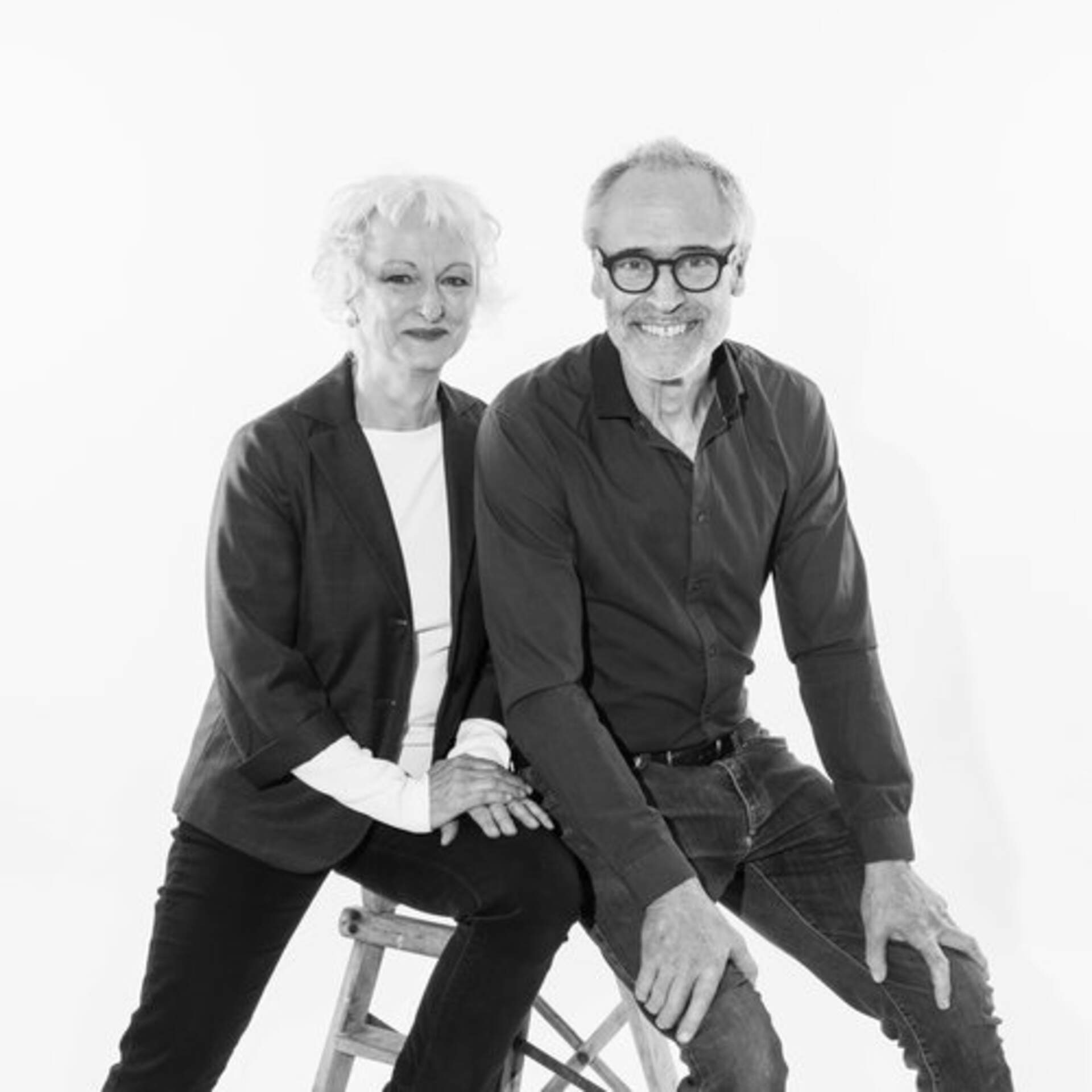Philip Baldwin and Monica Guggisberg
(1955 and 1947)
Philip Baldwin and Monica Guggisberg have been a collaborative team for over forty years. They share an instinctive appreciation for the subtle blending of art and design, functionality, and abstract expression, combined with a love of material – especially glass.
Theirs is a journey of continual evolution rooted in blown glass and Italian cutting techniques, centered on their unique innovations in cold working over the last several decades. From a studio which began around design in the early 1980s, they have become artists using glass as the central element in stories about civilization, the quirks of human character, and humanity's journeys. All the while remaining dedicated to beauty in form, shape, and color. Battuto is a style, a manner, a tool of expression. It allows an otherwise shiny glass surface to lose its shine, to gain an earthy, pithy texture, to acquire depth, a matte finish. Combined with layers of colored glass, cut through, it yields a whole new way to "paint" on glass. But the tool is never the expression itself. When discussing their artistic archetype, the pair stated:
“We came to Italian cutting techniques because we felt we had discovered a new way to expand dramatically on what we were already doing - using sandblasting as a way to cut through layers of color to create new and originally inspired patterns and ideas. In a nutshell, this development also contained a neat autobiographical element.” [1]
The two artists met in Sweden in the late-1970’s, where each of them had gone to learn the craft of blowing glass. She from Bern, in Switzerland, he from New York. Baldwin had a background in experiential education, Outward Bound, and nearly ten years of running his own program based in Boston. Guggisberg, after completing a formal apprenticeship in lampworking and opening her own studio, decided what she really wanted was blown glass at the end of a blowpipe. As students, they assisted Wilke Adolfsson and Ann Wolff before leaving Sweden to open their own studio in Switzerland in 1982. They continued their work as glass artists for 20 years in Switzerland and then in Paris, where they moved in 2001.
Along the way their engagement with glass has been an expanding highway covering their beginnings as a two-person "hotshop" making clean, functional designs for everyday use; collaborating with the traditional glass industry as designers, working with factories in Germany, Switzerland, the U.S. and Italy; and bringing the pair a gradual use of glass as an expression of art, a celebration of all that they have learned over the years combining their feelings about color, form, texture, pattern, and material. Over the years they have become more sculptural in focus, while seeking to imbue their work with a deep connection to archetypal forms and shapes, and striving for the highest level of craftsmanship. They address eternal symbols of human culture and history, while embracing contemporary evolution in form and meaning.
Large installations and major exhibitions in public spaces, such as Canterbury Cathedral in 2018 and The Glasmuseum Ebeltoft in Denmark 2020-2021 increasingly reflect their concerns for the shared world of our times, highlighting some of the challenges while continuing to express their love for beauty in form and object.
They have received numerous awards including the “Grand Prix des arts Appliquées 1999,” Lausanne, Switzerland; the Federal Commission for Applied Art, Switzerland; and IKEA Foundation, Sweden. Their work is featured in numerous museums around the world, some include: The National Glass Center, Sunderland, UK; Musée des Arts Décoratifs, Paris; Eretz Israel Museum, Tel Aviv; Hokkaido Museum of Modern Art, Sapporo, Japan; Museum Bellerive, Zürich; Museo del Vetro di Murano; Glasmuseum Ebeltoft, Denmark; Corning Museum of Glass, New York; Carnegie Museum of Art, Pittsburgh, and many others.
In 2023 their work, Guardiano Orangia Verde (c. 1999), was featured in the Lipsey Glass Collection exhibition at the Burchfield Penney Art Center, Buffalo, New York.
